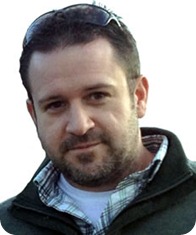
Please could you give a brief introduction to Parkinson’s disease and its symptoms?
Currently in the United States, there are over 1.5 million people living with Parkinson's and 50,000 new cases reported each year. Worldwide more than 6 million people are affected with Parkinson's disease. The disease onset most frequently occurs between 50 and 65 years of age.
The disease is a progressive neurodegenerative disorder that affects the motor system and is characterized by the symptoms of tremor, bradykinesia (slowed movement and hesitations), and rigidity (stiff joints). While many treatment interventions focus on movement symptoms in the upper extremity, Parkinson's disease can also affect gait and balance, speech, olfaction (sense of smell), sleep, and cognition.
What is Bradykinesia and why can it be an impairing symptom?
Imagine trying to move your fingers to turn the pages of a book, but instead of being able to complete that relatively simple task your fingers suddenly get stuck and refuse to respond to your brain's command to move. After several seconds of hesitation your fingers unlock and you can turn the page, however this muscle "freezing" happens periodically during activities of daily living such as trying to tie your shoes, eat, or walk. This freezing and hesitation of movement is known as "bradykinesia", a motor symptom that is a major source of functional impairment for Parkinson's patients.
How is Bradykinesia in Parkinson’s disease currently assessed?
The current clinical standard in evaluating symptoms is the Unified Parkinson's Disease Rating Scale (UPDRS), a qualitative ranking system developed by a panel of movement disorder experts. The UPDRS includes multiple sections to monitor several areas of disease impact including motor and non-motor experiences of daily living, a motor examination, and motor complications. The motor examination section includes several movements the patient completes to elicit motor symptoms while a clinician qualitatively assesses the symptoms through visual examination and assigns a 0 – 4 score.
The UPDRS exam is normally completed during an office visit in the presence of a trained clinician. In addition to the UDPRS, clinicians may ask patients to keep home journals to record when they took medication and symptom severities at various times during the day. Capturing this information is important because motor symptoms and side effects fluctuate during the day based on timing and dose of medications.
Why do Great Lakes NeuroTechnologies want to develop a better way of assessing Bradykinesia?
The UPDRS uses three tasks to evaluate bradykinesia severity on a 0-4 scale: finger taps; hand opening-closing; and pronation-supination. Patients are instructed to repetitively complete each task as fast and with as wide an excursion as they can. Raters are instructed to account for speed, amplitude, fatiguing, hesitations, and arrests in movement.
Accounting for all of these variables with a single score is challenging, even for the most experienced movement disorder specialist. Clinicians place variable weights on different bradykinesia manifestations. In addition, it is unclear if underlying neural mechanisms for different manifestations are the same. If different bradykinesia features were better quantified, novel DBS therapies may be developed to target a patient’s specific bradykinesia manifestations. Furthermore, a portable platform for more continuous monitoring would allow the capture of complex symptom fluctuation patterns in response to treatment.
Additionally, subjective rating scales can be subject to intra- and inter-rater reliability since they are based on the opinion of the raters. And more importantly is time resolution. Motor symptoms can fluctuate throughout the day in response to treatment. Therefore, capturing symptoms at only a single point in time may not be representative of the patient response to treatment and also may not capture wearing on and off effects of the treatment. Our Kinesia HomeView technology provides a quantitative platform that can record motor symptoms many times per day as well as diary information that can link dose times to responses to provide a more accurate picture of therapeutic benefits.
Great Lakes NeuroTechnologies have recently received $1.5 million to commercialize a better technology for assessing Bradykinesia. What will this funding be spent on?
The innovations of the technology development include
- compact, user-worn motion sensors that can be used with web-based software on a home computer or tablet
- algorithms that use kinematic data to rate speed, amplitude, and rhythm independently
- web-based applications for system delivery, patient interaction, and symptom reporting
In addition to development of the technology, the funding will support a large clinical study to demonstrate its test-retest reliability compared to clinical ratings and determine if speed, amplitude, and rhythm fluctuate differentially during deep brain stimulation therapy. We hypothesize the study will demonstrate the technology will:
- provide a standardized platform for bradykinesia assessment that objectively quantifies speed, amplitude, and rhythm
- receive high clinical acceptance from both clinicians and patients
- aid in development, evaluation, and optimization of therapies such as DBS and pharmaceutical interventions
What impact on Parkinson’s disease patients do you think this technology will have?
This technology will have important societal benefits. Designing the device for home use will allow patients to use the system without deviating from their normal daily activities to travel to the clinic. This will encourage patient acceptance and promote use. Furthermore, since the device will be designed for portable use, patients in rural and underserved areas can utilize the device without traveling great distances to a movement disorders center.
Providing a common, quantitative measure for bradykinesia will greatly aid researchers in the development, evaluation, and optimization of novel pharmaceutical and DBS treatments for bradykinesia associated with PD and other movement disorders. This will lead to improved quality of life for those suffering from movement disorders and increased societal participation.
In addition, the device will decrease costs to society by decreasing the required number of office visits. By providing clinicians with a comprehensive overview of how bradykinesia fluctuates throughout the day, clinicians will be able to development and adjust treatments in order to reduce symptom severity at the times that matter most to patients, thus increasing patient quality of life.
How do you think the future of evaluating Bradykinesia in Parkinson’s disease will progress?
In addition to new technologies that can independently assess bradykinesia features with high sensitivity, the future of evaluating bradykinesia and other Parkinson’s symptoms will likely also include some form of continuous monitoring. Continuous monitoring refers to not only monitoring patients during discrete tasks, but assessing them as they go about performing their every day activities. That is very important to determine how symptoms are fluctuating during daily activities. However, it presents a large challenge to technology to be able to differentiate not only between motor symptoms, but between motor symptoms and every day tasks.
What plans do Great Lakes NeuroTechnologies have for the future?
While our current focus is on improving diagnostics and telemedicine applications for Parkinson’s disease, we plan to continue to grow our medical technologies for movement disorders. In the coming years we plan to expand our home-based technologies to web-based therapies for brain injury such as motor impairment due to stroke and cerebral palsy.
Where can readers find more information?
www.GLNeuroTech.com
About Dr. J. Giuffrida
 Dr. Giuffrida received his B.S. in Biomedical Engineering from Case Western Reserve University in ‘99, followed by his MS ’00 and PhD ’04. His background focuses on movement disorders with extensive experience in clinical research, new technology development, and the commercialization of medical devices.
Dr. Giuffrida received his B.S. in Biomedical Engineering from Case Western Reserve University in ‘99, followed by his MS ’00 and PhD ’04. His background focuses on movement disorders with extensive experience in clinical research, new technology development, and the commercialization of medical devices.
He has successfully secured and executed over $12 million dollars in programs funded by the National Institutes of Health. He has published many scholarly publications and scientific presentations.
Dr. Giuffrida is currently leading the growth of Great Lakes NeuroTechnologies through the research, engineering, sales and marketing, manufacturing, and administrative teams.